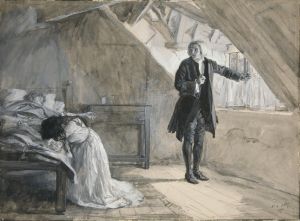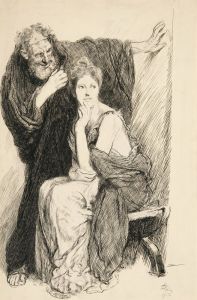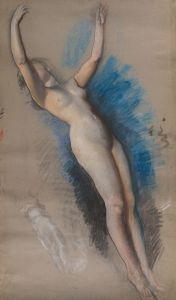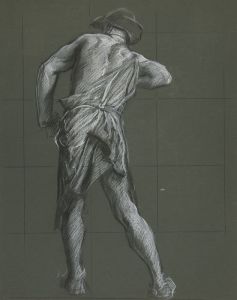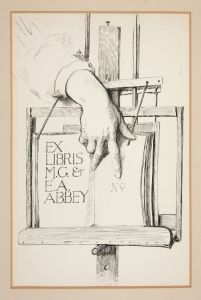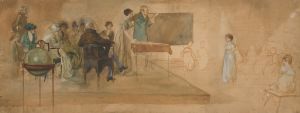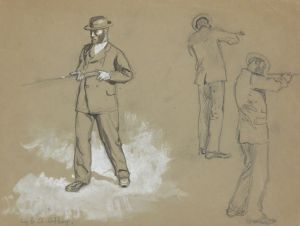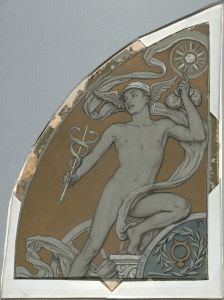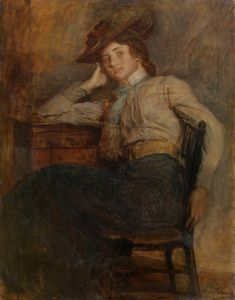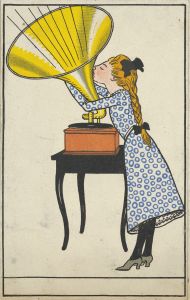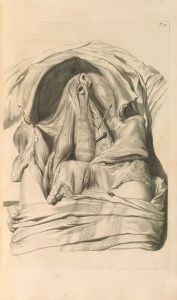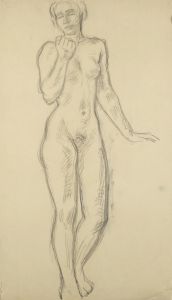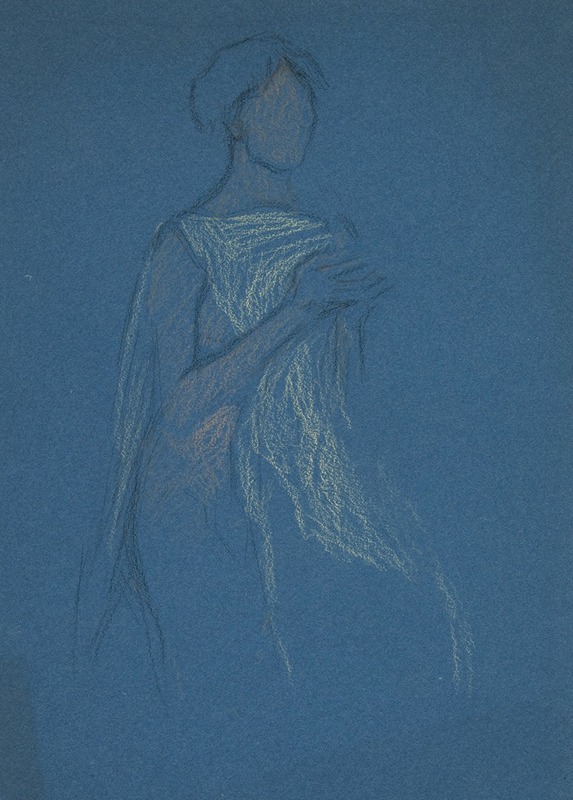
Sketch of a woman – costume study for a play III
A hand-painted replica of Edwin Austin Abbey’s masterpiece Sketch of a woman – costume study for a play III, meticulously crafted by professional artists to capture the true essence of the original. Each piece is created with museum-quality canvas and rare mineral pigments, carefully painted by experienced artists with delicate brushstrokes and rich, layered colors to perfectly recreate the texture of the original artwork. Unlike machine-printed reproductions, this hand-painted version brings the painting to life, infused with the artist’s emotions and skill in every stroke. Whether for personal collection or home decoration, it instantly elevates the artistic atmosphere of any space.
Edwin Austin Abbey was an American artist known for his illustrations and paintings, particularly those depicting Shakespearean and Victorian subjects. One of his works, "Sketch of a Woman – Costume Study for a Play III," is a testament to his skill in capturing the essence of theatrical characters through detailed costume studies. Abbey's work is characterized by his meticulous attention to detail and his ability to convey the texture and richness of fabrics, which is evident in this particular sketch.
Abbey was born in 1852 in Philadelphia and began his career as an illustrator for magazines such as Harper's Weekly. His early work was heavily influenced by the Pre-Raphaelite Brotherhood, a group of English painters, poets, and critics founded in 1848. Abbey's fascination with historical and literary themes is reflected in his numerous illustrations of Shakespearean plays and other classic works.
"Sketch of a Woman – Costume Study for a Play III" is part of Abbey's extensive body of work related to theatrical productions. Although specific details about this particular sketch are limited, it is likely that it was created as part of his preparation for a larger painting or illustration. Abbey often created detailed studies of costumes and characters before embarking on his final compositions, ensuring that every element was historically accurate and visually compelling.
Abbey's costume studies are notable for their precision and artistry. He had a keen eye for the nuances of period clothing, and his sketches often include intricate details such as lace, embroidery, and the drape of fabric. This attention to detail not only enhanced the authenticity of his work but also provided valuable insights into the fashion and material culture of the periods he depicted.
In addition to his work as an illustrator, Abbey was also a successful painter. He moved to England in 1878, where he became associated with the Royal Academy and gained recognition for his murals and large-scale paintings. One of his most famous works is the series of murals in the Boston Public Library, which depict scenes from the Arthurian legends.
Abbey's contributions to art and illustration were widely recognized during his lifetime. He was elected to the National Academy of Design in 1902 and received numerous awards and honors for his work. His legacy continues to be celebrated today, with his illustrations and paintings held in collections around the world.
While "Sketch of a Woman – Costume Study for a Play III" may not be as widely known as some of Abbey's other works, it exemplifies his dedication to capturing the spirit of the theater and his mastery of the illustrative arts. Abbey's ability to bring characters to life through his detailed studies remains a significant aspect of his artistic legacy.





